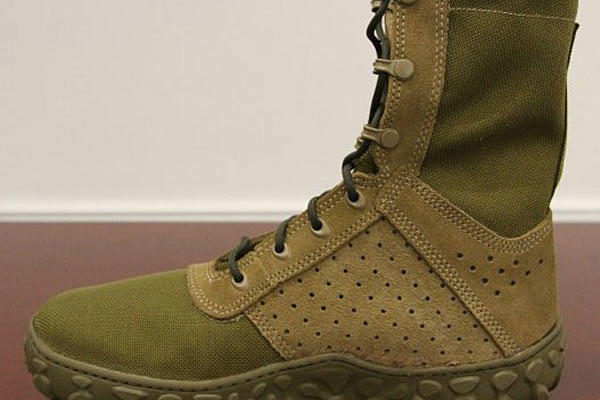Soldiers may soon be shelving their collection of desert boots and lacing up the Army's new, modernized jungle boots.
Uniform officials recently announced they could begin testing several commercially available jungle boot designs this summer as part of an effort to prepare soldiers for the Army's pivot to the Pacific region, according to Col. Robert F. Mortlock, project manager for Soldier Protection and Individual Equipment, in a March 31 press release.
Soldiers wore Vietnam War-style jungle boots up until a decade ago when the Army transitioned to its current, desert-style combat boot styles -- one for hot weather and one for temperate climates.
Those leather and nylon jungle boots came in green and black or all-black versions. They were comfortable, but they offered very little support for feet and ankles on rough terrain.
A good jungle boot, Mortlock said, needs to dry quickly after being submerged in water. It needs to be lightweight and breathable to keep feet comfortable in hot and humid conditions. It also needs to provide good traction in muddy terrain.
The newer jungle boots that will be tested will feature a number of design improvements that have emerged during the war years, according to the release. The Army did not specify how many boots it will test and released a photo of only one type being tested.
One of the biggest design upgrades is "direct-attach outsoles," Mortlock said, explaining that these soles that are glued, not stitched, to the bottoms of boots, make some pairs of Army Combat Boots up to 1 pound lighter. The direct-attach outsoles are also less apt to separate after long, rough usage.
But equally important, he said, direct-attach outsoles have reduced lower leg injuries to soldiers because they reduce the shock transferred to the foot and leg.
The Army's "universal sizing" system is also important. Until the Army adopted universal sizing, a soldier wearing size 10.5 boots and who ordered another pair of the same size from another vendor might find the new boots somewhat smaller or bigger than the boots being replaced. This is because commercial vendors use different molds, or "lasts" for building their footwear.
The Army now requires that a universal "last" or mold be used by all of its boot vendors to ensure that Army-issue boots have universal sizing. This will reduce the logistics trail and save time for soldiers and their units, Mortlock added.
But the most important factor in the development of the new jungle boot -- or any new boot style -- is soldier feedback from rigorous testing, he said.
"We do this rigorous user testing because we want soldiers to trust and have confidence in their equipment so they can focus on their primary mission," Mortlock said. "And we've built up that trust over a number of years."
-- Matthew Cox can be reached at Matthew.Cox@monster.com.




























